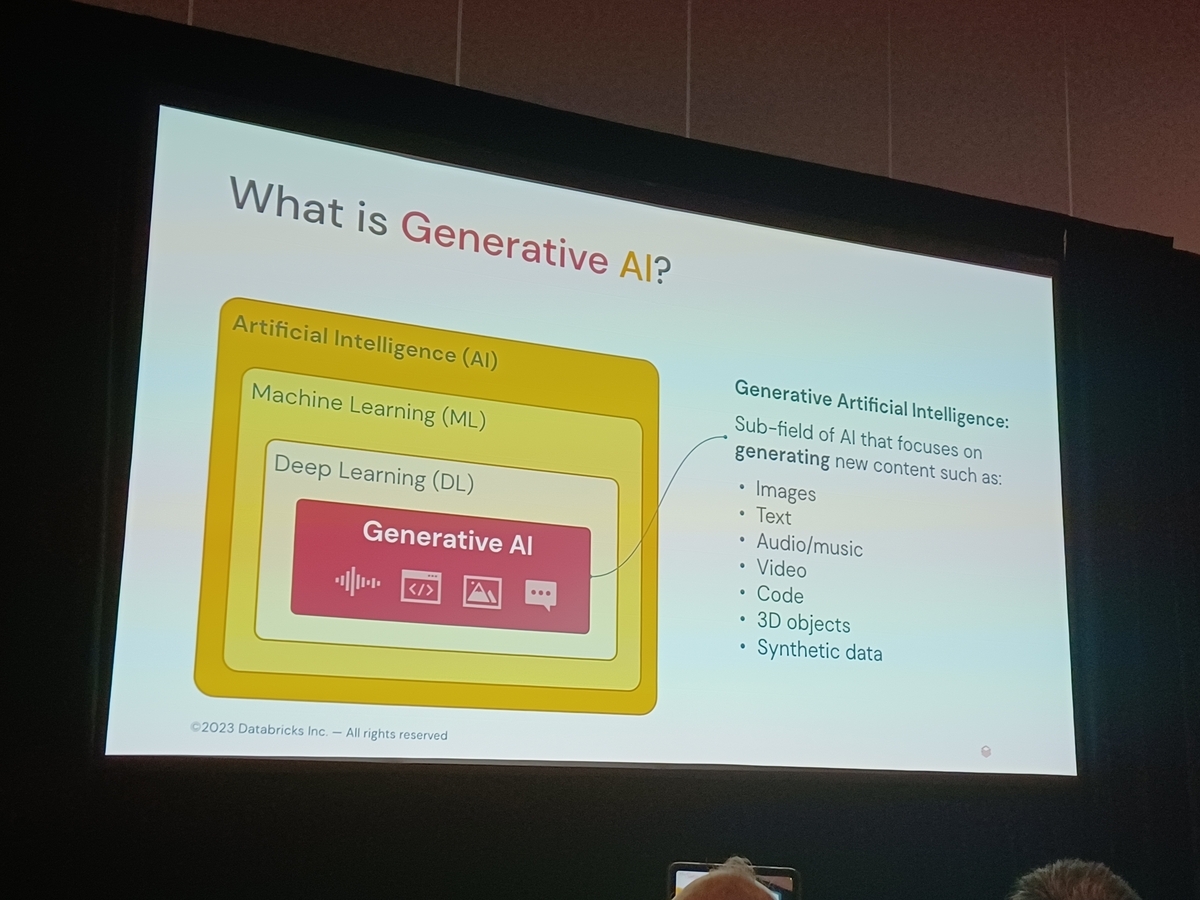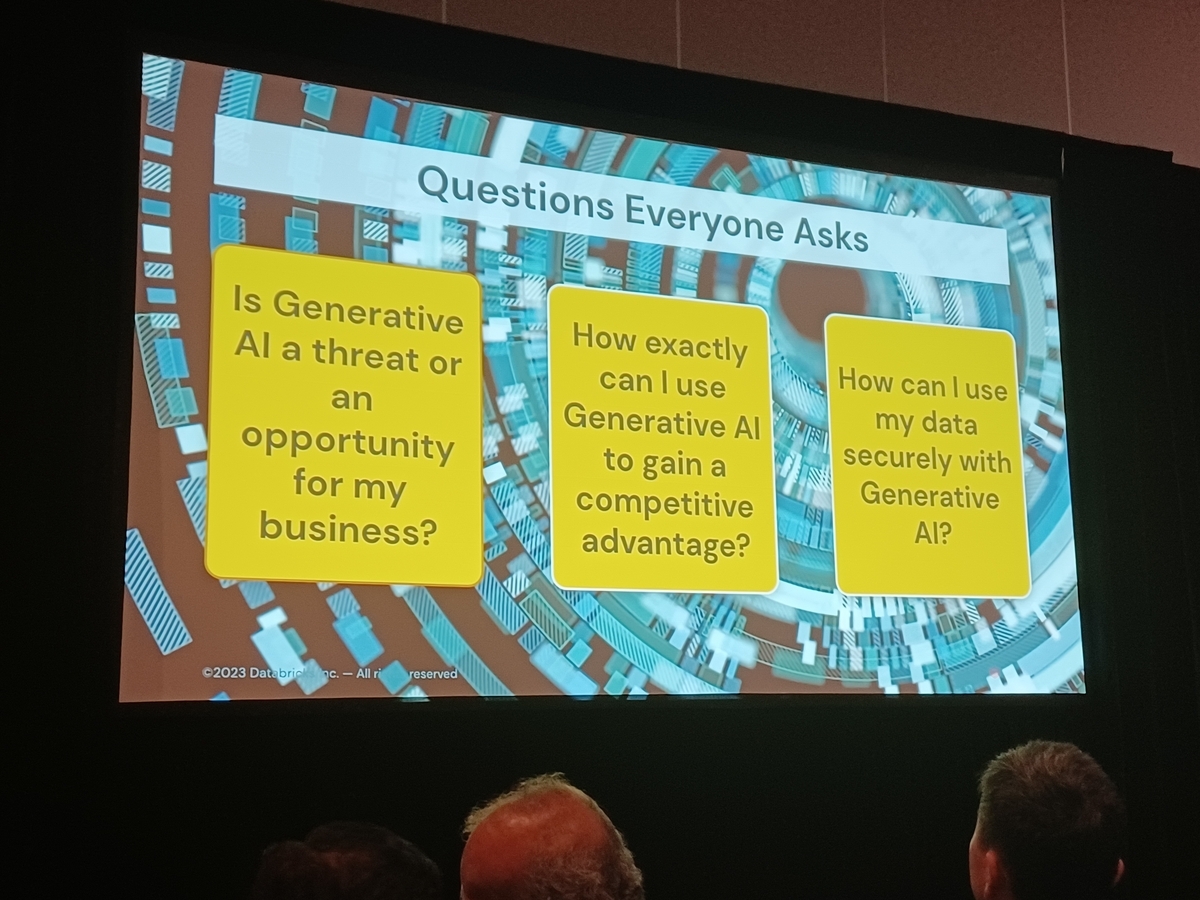Introduction
GLB Business Department Lakehouse Department Chen. Based on the report by Mr. Nagasato who participated in Data + AI SUMMIT 2023 (DAIS) on site, I would like to introduce the session "Generative AI Fundamentals".
This session is with Anastasia Prokaieva, Specialist Solutions Architect at Databricks. In the lecture, basic concepts and application examples of generative AI were explained. Data security and potential risks were also touched upon, and knowledge about the safe use of generative AI was introduced.

Generative AI overview
Generative AI is a technology in which artificial intelligence mimics human thinking and finds patterns and correlations in data. This makes it possible to generate new data and information. Generative AI utilizes machine learning and deep learning technologies and has the following characteristics.
- Ability to learn large amounts of data and generate new information from that data
- They can be as creative and flexible as humans
- Automatically find patterns and correlations in data and use them to generate new data

Usage examples and use of open source software
Generative AI is already used in current technologies and services. For example, voice assistants such as Siri and Google Assistant recognize the user's voice and generate and provide information accordingly. Open source software such as HuggingFace also makes use of generative AI. These software have the following advantages:
- Because it is open source, anyone can freely use and modify it
- Easy introduction of generative AI technology
Stay up-to-date with community support and updates
Data security and potential risks regarding safe use of generative AI With the proliferation of generative AI, we also need to consider data security and potential risks. Some of the points are as follows.
Data privacy protection: The data that generative AI learns may contain personal and confidential information. Appropriate security measures are required to prevent leakage of such information.
- Misuse prevention: Information generated by generative AI can be used maliciously. For example, fake video and audio using deepfake technology has become a social problem. Measures should be taken to prevent these abuses.
- Ethical Issues: Generative AI's human-like creativity can raise copyright and intellectual property issues. We need a legal and ethical framework to deal with these issues.
Generative AI is expected to develop further in the future and have a major impact on our lives. Therefore, as technology advances, it is important to fully consider data security and potential risks and work to ensure safe use.
Summary
Through this lecture, I was able to deepen my understanding of the basic concepts and application examples of generative AI, as well as data security and potential risks. With the development of AI technology in the future, the use of generative AI is expected to expand further, but we were able to recognize once again that appropriate knowledge and countermeasures are necessary for its use.
Conclusion
This content based on reports from members on site participating in DAIS sessions. During the DAIS period, articles related to the sessions will be posted on the special site below, so please take a look.
Translated by Johann
Thank you for your continued support!
